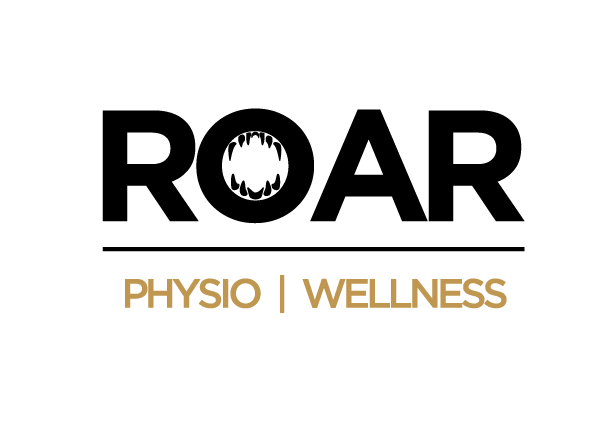Frozen shoulder, also known as adhesive capsulitis, is a painful and debilitating condition that significantly restricts the movement of the shoulder joint. Understanding the causes and effective treatment methods is crucial for achieving relief and restoring mobility. This blog provides an in-depth look at how physiotherapy can help treat frozen shoulder, including the main causes, effective techniques, and expected recovery times.
What Causes Frozen Shoulder?
Frozen shoulder is primarily caused by inflammation and thickening of the shoulder capsule, the connective tissue surrounding the shoulder joint. This condition leads to pain and significant stiffness, making movement difficult. The exact cause of this inflammation is not always clear, but several risk factors are associated with the development of frozen shoulder.
Prolonged immobilization is a significant factor, often due to injury, surgery, or other medical conditions. Extended periods of immobility cause the tissues around the joint to stiffen and thicken, leading to frozen shoulder. Another major risk factor is diabetes. Individuals with diabetes are at a higher risk of developing frozen shoulder, possibly due to the effect of high blood sugar levels on connective tissues, leading to inflammation.
Age and gender also play a role, with frozen shoulder most commonly affecting people between the ages of 40 and 60, and being more prevalent in women than men. Additionally, other medical conditions such as heart disease, thyroid disorders, and Parkinson’s disease have been linked to an increased risk of developing frozen shoulder.
Physiotherapy Techniques for Frozen Shoulder Treatment
Physiotherapy plays a crucial role in managing and treating frozen shoulder by using various techniques designed to reduce pain, improve mobility, and restore function. Here’s how physiotherapy can help:
- Pain Management: Physiotherapists use modalities such as heat therapy, cold therapy, and dry needling to reduce pain and inflammation in the shoulder joint. These treatments help make the shoulder more receptive to exercise and stretching.
- Manual Therapy: This includes hands-on techniques such as joint mobilizations and soft tissue massage. Joint mobilizations involve gently moving the shoulder joint to improve its range of motion, while soft tissue massage helps to relieve muscle tension and improve circulation.
- Stretching and Strengthening Exercises: A tailored exercise program is crucial for treating frozen shoulder. Stretching exercises help to gradually increase the range of motion, while strengthening exercises improve muscle support around the shoulder joint, enhancing overall stability and function.
Education and Home Exercises: Physiotherapists educate you on proper posture and movement techniques to avoid aggravating the shoulder. They also provide home exercise programs to ensure continued progress between therapy sessions.
Get Your Roar Back
Physiotherapy for Frozen Shoulder: Healing Timelines Explained
The healing time for a frozen shoulder can vary widely depending on the severity of the condition and the individual’s response to treatment. Generally, frozen shoulder progresses through three stages: the freezing stage, the frozen stage, and the thawing stage, each with its own timeline and characteristics.
During the freezing stage, which lasts from 2 to 9 months, the shoulder is characterized by increasing pain and stiffness. Physiotherapy during this stage focuses on pain management and maintaining as much range of motion as possible. This initial period can be challenging due to the discomfort and limited movement.
The frozen stage, lasting from 4 to 12 months, may see a decrease in pain, but stiffness persists. Physiotherapy during this stage aims to improve flexibility and strength, gradually working to restore mobility. Despite the reduction in pain, the shoulder remains significantly stiff, requiring continuous effort to improve movement.
The thawing stage spans from 5 to 26 months and involves a gradual return to normal movement. Physiotherapy in this final stage continues to focus on increasing range of motion and strength until full function is restored. This stage is crucial for regaining full mobility and ensuring that the shoulder returns to its normal state.
Overall, with consistent physiotherapy, many individuals see significant improvement in their symptoms within six months to a year, and while complete recovery can sometimes take longer, the right approach can provide relief much sooner. Regular sessions and adherence to prescribed exercises are key to a successful outcome, helping to ensure that the shoulder regains its full functionality.
Recommended Exercises for a Frozen Shoulder
Exercise plays a crucial role in the treatment of a frozen shoulder. Specific exercises help to improve flexibility, restore range of motion, and strengthen the muscles surrounding the shoulder joint. Here are some of the most effective exercises for a frozen shoulder:
- Pendulum Exercises: Stand with your arm hanging down and gently swing it in small circles. This helps to loosen the shoulder joint and improve mobility.
- Towel Stretch: Hold a towel behind your back with one hand and grab the opposite end with the other hand. Use the top arm to gently pull the lower arm upward, stretching the shoulder.
- Finger Walk: Stand facing a wall and walk your fingers up the wall, as high as you can comfortably reach. This helps to improve range of motion in the shoulder.
- Cross-Body Reach: Use your unaffected arm to lift the affected arm at the elbow and bring it across your body to stretch the shoulder.
- Armpit Stretch: Lift your affected arm onto a shelf or similar height. Gently bend your knees to stretch the armpit area.
- Outward Rotation: Hold a resistance band between your hands with your elbows at a 90-degree angle. Rotate your forearm outward, keeping your elbows close to your body.
Activities to Avoid with a Frozen Shoulder
Generally, I encourage my patients to move as much as possible when dealing with a frozen shoulder, but often it’s difficult to know exactly how to move your painful shoulder and what movements are okay to do without a thorough assessment by a physiotherapist. While waiting to get an assessment, it can help to avoid activities that can worsen the condition or increase pain. Here are some examples of activities you may want to avoid:
- Overhead Lifting: Avoid lifting objects overhead, as this can strain the shoulder and exacerbate pain.
- Heavy Lifting: Refrain from lifting heavy objects that can put excessive pressure on the shoulder joint.
- Repetitive Movements: Avoid repetitive motions that can irritate the shoulder, such as certain sports or occupational tasks.
- Sleeping on the Affected Shoulder: Sleeping on the affected shoulder can increase pain and stiffness. Try to sleep on your back or the opposite side.
- Sudden Jerky Movements: Avoid sudden, jerky movements that can strain the shoulder muscles and shoulder joint.
Pain-Free Living Starts Now
Frozen shoulder can significantly impact daily life, but with the right approach to treatment, substantial relief and recovery are possible. Physiotherapy offers a comprehensive solution by addressing the underlying causes of frozen shoulder, reducing pain, and restoring mobility.
If you’re struggling with a frozen shoulder, the experienced team at Roar Physio | Wellness is here to help. Our physiotherapists provide personalized treatment plans tailored to your needs. Contact us today to schedule an appointment and take the first step toward restored shoulder mobility!

